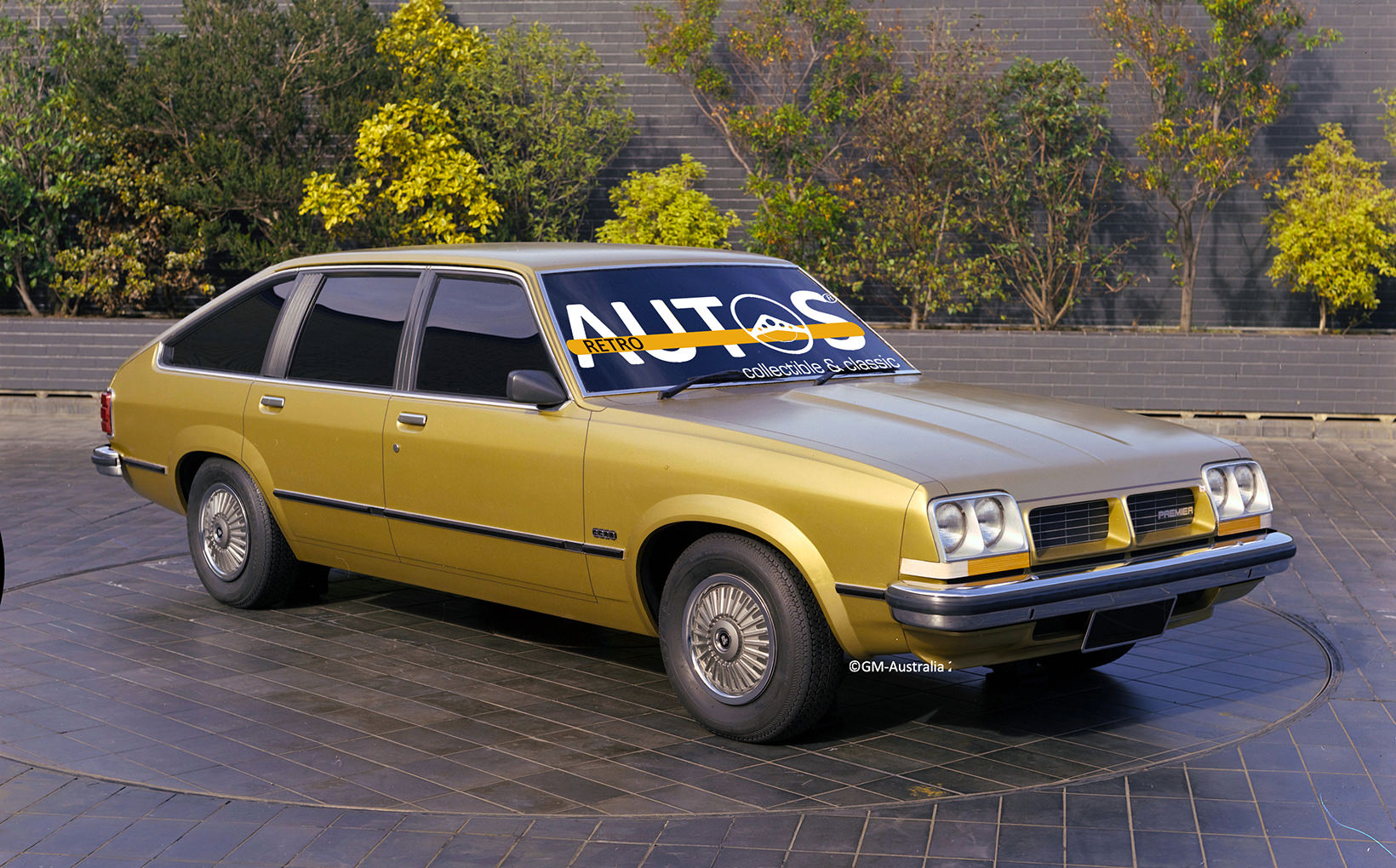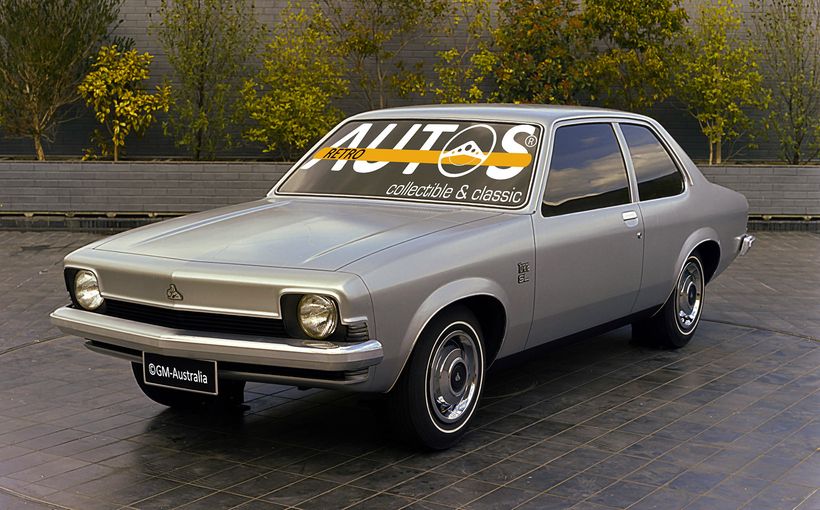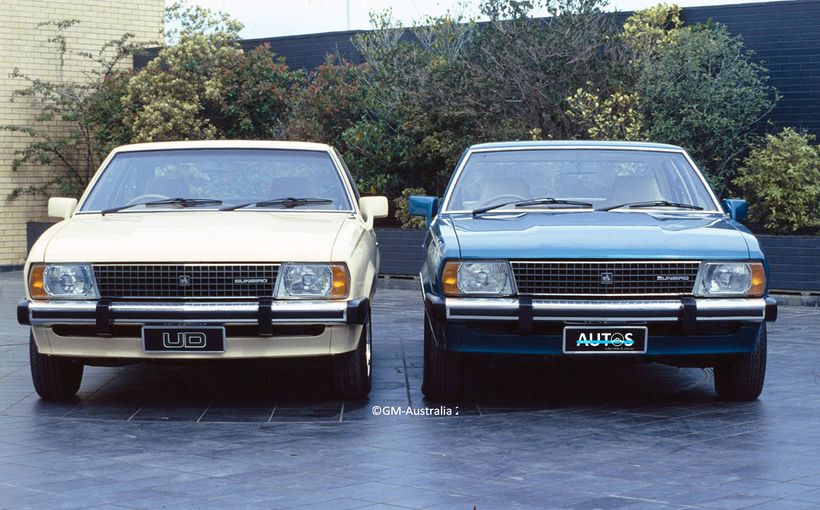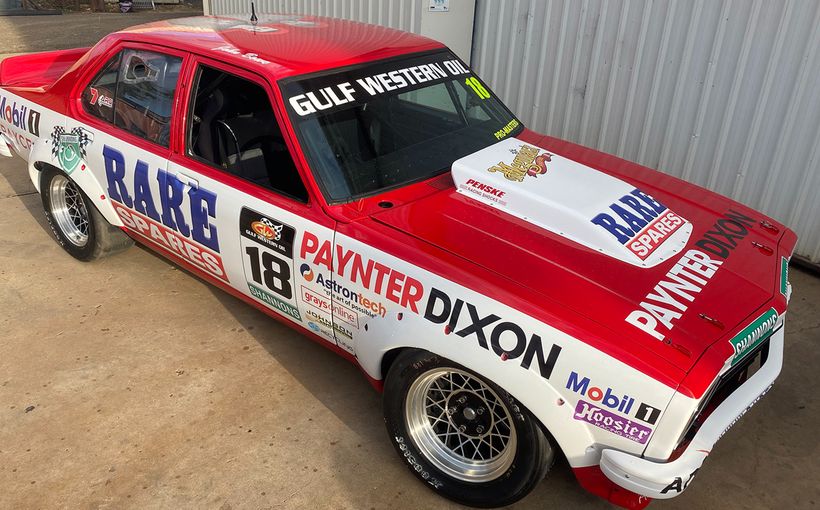Never released VA Torana - five door hatchback! Secret photos

The VA Torana was supposed to be released in early 1977 and include a class leading five-door hatchback offering six cylinder and V8 engines. But it was axed.

The VA was in development during the early to mid-1970s, a time when General Motors Holden’s (GMH) sales volume and market share were declining. It is a well documented period of indecision about future products.
Back then, GMH’s top management was largely focused on financial outcomes. When it came to new models, the design team was restricted to shapes that used as much carry over sheet metal as possible to keep costs low. As Dr John Wright succinctly summed it up in his book Heart of the Lion:
“At GMH, bureaucratic caution was undermining future prospects by denying the possibility of creative boldness; a stultifying era had settled in at Fishermens Bend.”

At the same time, General Motors (GM) was starting to awake to the significant cost saving benefits of sharing technology across its subsidiaries and developing cars which were designed centrally then sold globally—world cars.
All of this would impact the VA’s fate, as it did with the delayed HJ and cancelled HV, WA and WB projects. These have been covered in previous editions of Retroautos. There are links at the end of this story.
VA Purpose

The original plan was for the VA to replace the LH/LX Torana. Development commenced in November 1973, five months before the LH was released. The range comprised a four-door sedan, three door hatchback coupe and the five-door hatchback. The launch was set for January 1977. A mildly restyled VB model was scheduled for early 1980, followed by the VC in 1983.
Although the sedan and coupe would retain the existing LH/LX wheelbase of 101.8 inches/2586mm, the five-door hatchback was envisioned as a roomier car. Its wheelbase was set at 106 inches/2692mm. Rear seat leg room and load space would be the beneficiary of the stretch.

Indeed, the five door hatchback’s dimensions approximated those that were originally proposed for the LH/LX by GMH designers. In my Design to Driveway book series, Leo Pruneau, who led GMH’s design efforts for many years, explained why the LH/LX ended up on its 101.8 inch/2586mm wheelbase.
“Detroit always considered length and wheelbase together. They looked at our plans and thought that a 105 inch/2667mm wheelbase would make the car too long. Now, we knew it would not be too long, because we would use very short overhangs, but we could not convince them. We ended up being told to use a 101.8 inch/2586mm wheelbase which robbed the design of rear seat room.”

A five-door hatchback was not a new idea in Australia. The locally assembled Renault 16 had arrived in 1968, BMC marketed the Morris 1500 Nomad from 1969 to 1972 and VW’s Passat was about to hit the market. The Renault’s dimensions were similar to the VA’s. Although priced less than a Kingswood/Falcon/Valiant its sales were not brisk. The smaller and cheaper Nomad did not excite buyers either. Fewer than 8,000 were sold during its three years of production.

What held them back was their smallish four-cylinder engines and supposed lack of interior space. Australia was still a land where family car buyers preferred the cavernous interiors of long wheelbase station wagons and a powerful six or V8 up front.
Dr Wright captured the situation in his Shannons Club Classic Garage story of December 2015. Although referencing the Renault, his insight has wider application.
“The Renault 16 was the brilliant answer to a question few people had even begun to consider.” (See Classic Garage and Shannons Club TV links at the end.)

Before moving on, I’ll explain why the VA was coded “VA”. It was a response to the global alignment of GM’s vehicle platforms. Large cars were coded “W”. Then came “V”, a medium sized car. Following in descending order of size was “U”, “J”, “T” and “S”. The 1974 TA Torana was GMH’s first model to adopt the new coding system.
Styling


All VA’s would feature a sloping front end. It would place the Torana within an emerging GM design theme, seen on cars such as the Vauxhall Cavalier, Chevrolet Monza and planned Torana Ikara rotary engine coupe. (There’s a link to my Retroautos Ikara story at the end.)


The VA’s interior was also an opportunity to improve the visuals and ergonomics of the LH/LX’s rather austere forms.
The styling deadline was set at November 1974. Production approval was required by March 1975. But during those months the situation changed.
In October 1974 a market research clinic was conducted on the five-door hatchback. Dr Norm Darwin noted in his book, Torana Tough, that the outcome was not positive. That is not surprising considering the muted response to the hatchbacks already on the market.


When the market research results were factored into the financials of the VA’s business case, top management had significant doubts that the costs of the restyling the entire range, plus the additional costs of new tooling for the entire rear section of the five door, could be justified by the predicted small increase in volume of the five door.
Also, in late 1974, GM in Detroit began suggesting that a similar sized V-car, being developed by Opel and Vauxhall for a late 1977 European release, might be a better, newer and cheaper alternative.
An internationally sourced car was not a new concept for GMH. GM’s first world car was about to be released in Australia as the TX Gemini. Indeed, the initial proposal for the LH/LX Torana was a stretched version of the T-car.
In the early months of 1975 several GMH managers assessed the Opel/Vauxhall V-car. It quickly became an enticing substitute for the VA.


What GMH now faced was a choice.
With sales falling and market share shrinking, its managing director, Damon Martin, could go to Detroit to make a presentation to GM’s all-powerful product approval committee, rejecting the V-car and requesting the go-ahead for the Australian-only VA, acknowledging the risks exposed by the financials and market research analysis.
Alternatively, the company could go with the ready-made and supposedly much cheaper solution of the newer European V-car.

And so, the VA was terminated and the V-car—the VB Commodore—was approved. What happened next, though, reveals the ongoing hesitations within the top ranks of GMH.
Apparently, there was considerable uncertainty that the Commodore’s “European” styling, with its rounded shape and sloping front end, would appeal to Australians, so GMH hedged its bets.

First, a hastily devised plan was approved for a minimally re-styled interim replacement for the LH/LX to be released in January 1978. This was the UC Torana/ Sunbird.
Second, after the launch of the Commodore in September 1978, the UC would continue in production but be relegated to a support role until 1980. At that point it was to be replaced by the UD. A model coded UE was planned for 1984.
Essentially, the UC/UD/UE was being retained in GMH’s line up just in case the Commodore was not successful.
Whilst the UC did appear in our driveways, the UD and UE never did. That’s the story in next month’s Retroautos, featuring many never before seen styling development photos, including another attempt at a five door hatchback.
VA - Never a contender

Would the VA have been a success? Certainly, an opportunity was lost to have a unique five door hatchback in GMH’s range.
The unavoidable reality is, however, that as the 1970s unfolded, GM could no longer afford standalone models in low volume markets such as the VA. Its decades long and very successful strategy of allowing its overseas subsidiaries and US divisions to develop their own bodies, engines and technology was quickly becoming economically unsustainable. GMH’s woes were an example of this situation.
Everywhere it operated, GM’s sales were being eaten away by new, high quality and affordable cars that were developed centrally and sold internationally. No longer was making country-specific cars, such as “Australia’s Own Car”, a financially viable way to operate in the global automobile business. World cars were the future.
Against this unstoppable global transition, the VA was never going to be a contender.
Ironically, just prior to the VA’s cancellation, Wheels magazine proclaimed the VW Passat as its 1974 car of the year. Created in Germany it was sold around the world.
Links to GMH’s fascinating history in the 1970s, including the delayed and cancelled models: HV Holden, HJ Holden, WA Holden, WB Holden, Torana Ikara, Renault 16 and Club TV
Retroautos is published with passion and with pride by David Burrell. Special thanks John Kyros at GM Heritage for his research of images. Retroautos stories and images are copyrighted. Reproducing them in any format is prohibited. GM’s images are copyright. Retroautos is a registered trademark. Reproducing it in any format is prohibited.








